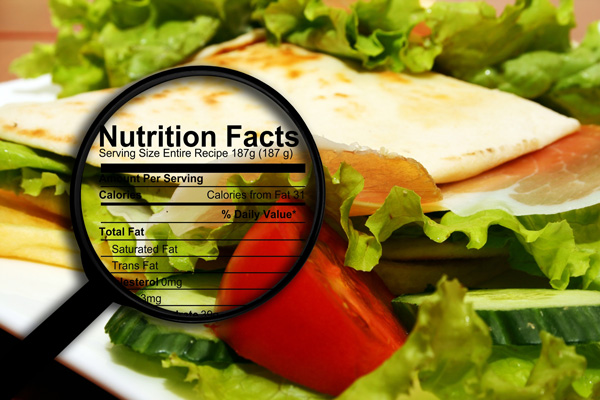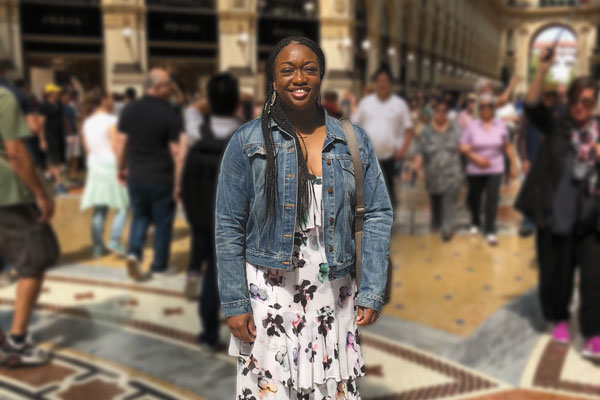
From the cave paintings of prehistoric times to the masterpieces of today, creating art with paint seems to be a fundamental urge in humans. The key to paint is the pigment, the substance that gives a paint its color.
But, finding pigments that are both colorful and long-lasting is a huge challenge. Nevertheless, humans have collected many substances over the past centuries that allow them to express themselves in paint.
A pigment is a substance, insoluble in water or in the liquid medium of paint, which imparts color. Historically, inorganic compounds were used to infuse color into paint, although a large range of organic-based pigments are now available.
Inorganic Pigments
Red ochre, made of iron(III) oxide, is a naturally occurring pigment in soils throughout the world. Known to have been used to decorate the body or bones in burial rituals during Paleolithic times approximately 350,000 years ago, it is possibly one of the first pigments used by man. Another early pigment was elemental carbon as found in soot from burnt wood or bones
Raw sienna is a yellow-brown natural earth pigment, composed primarily of iron oxide and magnesium oxide. When heated it turns redder and is called burnt sienna.
Cobalt blue, from a cobalt aluminate mineral, was introduced into Chinese pottery seven centuries ago. Another blue pigment, called ultramarine, was made by crushing the mineral gemstone, lapis lazuli, and extracting a blue powder.
Dutch Golden Age master Johannes Vermeer famously used ultramarine to create his “Girl with a Pearl Earring” painting. He apparently loved the blue color so much
he nearly went broke by buying huge quantities of the expensive paint. It is still quite expensive, selling for more than $800 per ounce on art websites.
A number of inorganic pigments contained heavy metal compounds that are toxic, so some paints containing them find limited use or are now prohibited. These include compounds of lead, cadmium, uranium, and chromium.
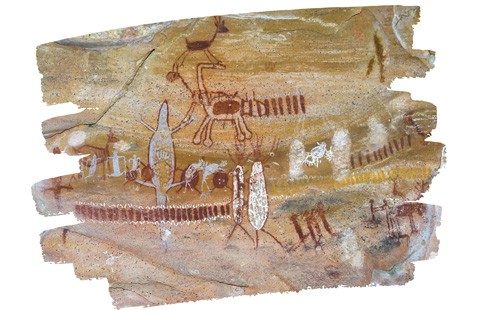
Organic Pigments
Organic pigments are preferable in that they are free of these issues and also tend to be brighter and more intense. Many modern, commercially available, artist-quality paints, such as acrylic, oil, and watercolors, exploit synthetic organic pigments.
Alizarin red is a natural pigment extracted from the roots in the madder plant genus. It has been used since ancient Egyptian times. Red cloth dyed with alizarin was found in King Tutankhamun’s tomb in Egypt. In modern times, alizarin has been chemically altered to produce vivid blues and greens.
Indigo is another natural pigment with a distinctive blue color, derived from the indigo and woad plants. It was first used in India and soon spread to Europe through trade. It was also known in ancient Peru.
A rich red dye called carmine red is another example of a pigment derived from nature. In this case it is extracted from cochineal insects. This insect produces carminic acid that wards off other bugs. The carminic acid is then mixed with aluminum or calcium salts to make carmine dye, also known as cochineal.
As chemists learned more about manipulating organic structures and synthesis, a number of synthetic organic pigments were produced. One of the first to be discovered was Prussian blue, made somewhat by accident when a German chemist mixed cochineal with blood, potash, and iron(III) sulfate to form iron(III) hexacyanoferrate(II).
As modern chemistry advance and more chemical elements were discovered and refined, chemists created pigments based on cadmium, chromium, titanium, and other transition metals.
The process of inventing new pigments continues today. For example, a unique new blue pigment (called YInMn Blue) was created in 2009 by researchers at Oregon State University in Corvallis, Oregon. Made from the elements, yttrium, indium, and manganese, it is now commercially available. And, in 2019, chemists at the Massachusetts Institute of Technology in Cambridge, Mass., developed a black pigment 10 times blacker than the previous record-holder for blackest pigment. It was made from carbon nanotubes.
Making Paints
Modern oil and acrylic paints produced for artists are composed of a binder, a pigment, and a liquid medium. The binder and pigment are suspended in the liquid. The binder makes the pigment adhere to the surface to be painted.
In oil paint, linseed oil is both the binder and liquid. Linseed oil has large unsaturated molecules that join together (polymerize) upon exposure to oxygen in the air as the paint slowly dries, which results in the pigments sticking to the canvas.
In acrylic paint, which is also known as latex in the United States or emulsion in the United Kingdom, the liquid is water and the binder is a derivative of acrylic acid, usually the ester, methyl acrylate.
Once acrylic paint has been applied, it dries in a series of steps. When exposed to the atmosphere, water evaporates, or is absorbed into the painting surface. That’s when the monomers of the binder come into direct contact and fuse with each other forming a transparent polymer.
The clear polymer particles organize themselves into a stable, hexagonal structure, trapping the pigment in place and resulting in a paint film which is extremely stable, water-resistant, permanent, and vibrant.
Emulsions are colloidal suspensions. A colloid is a homogenous suspension of large molecules, or very fine solid particles of a substance dispersed in another substance, which is liquid.
A colloid differs from other suspensions in that the particles cannot be removed through physical means, such as filtration or by use of a centrifuge, and do not settle under gravity. Gels (like jelly) and sols are other examples of colloids.
Watercolor paint consists of a pigment dispersed in a suspension of solidified binder, which is soluble in water to allow the pigment to adhere on a painted surface when dry. The binder used is often a naturally occurring substance known as gum arabic.
The binder in the paint dissolves when water is added, so the pigment may be spread by brush. When applied, watercolor paint allows light to pass through and reflect back from the surface of the paper to create a transparent, luminescent effect.
A watercolor paint, known as gouache, may also be used to give a watercolor creation greater density in color. Gouache once contained a toxic mixture of lead(II) carbonate and lead(II) hydroxide. This white pigment tended to discolor over time due to the slow effects of low concentrations of compounds of sulfur present in polluted air (such as hydrogen sulfide). The same issue affected the oil paintings of Old Masters making them appear darker over time.
PbCO3 + H2S → PbS + H2O + CO2
White lead(II) carbonate combines with hydrogen sulfide to yield black lead(II) sulfide.
2Pb(OH)2 + SO2 → PbS + 2H2O
White lead(II) hydroxide combines with sulfur dioxide to produce black lead(II) sulfide.
Why do Pigments Appear to Reflect Color?
Sir Isaac Newton demonstrated with a simple glass prism that white light consists of a spectrum of wavelengths, each of which produces the perception of an individual color when received by the human eye.
In the same way, spherical droplets of water in the spray from a waterfall, or in the air, can refract white light into a rainbow of different colors.
When white light strikes a particular blue pigment, the pigment absorbs red and green light and reflects blue light. An observer perceives the surface of the pigment as blue.
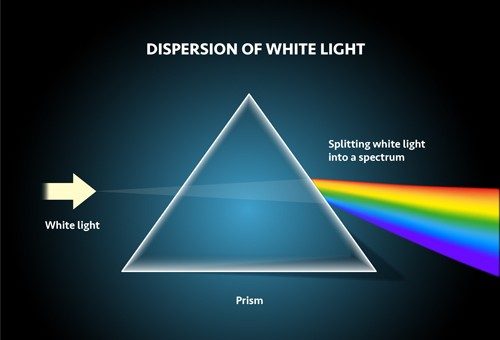

Absorption of Light by Inorganic Pigments
Many inorganic pigments are compounds of transition metals. Iron, chromium, manganese, cadmium, and cobalt are transition metals that occupy the central part of the Periodic Table.
Brightly colored compounds are a feature of the chemistry of transition metals, which is in marked contrast to the white or colorless compounds of the other metals in Groups I and II.
To explain this, we need to talk about electrons. When energy is absorbed by an atom or molecule, an electron in the ground state may jump to an excited state. When the excited electron comes back down from this higher energy level it has to release the energy that it absorbed.
This energy is released as electromagnetic radiation. Depending on the energy difference between excited and ground states different wavelengths of electromagnetic radiation will be released.
The valence electrons of transition metals are found in the d orbitals of the atom or ion. When the metal is not bonded to anything else, these d orbitals all have the same energy. When the metal starts bonding to ligands that surround it, however, this changes. Due to the different symmetries of the d orbitals and the effects of the ligands on the electrons, the d orbitals split.
This creates energy levels and electrons can be excited from the lower d block energy level to the higher energy level that results in only part of the visible light spectrum being absorbed.
In contrast, the ions of Group I and Group II metals, such as sodium and calcium, have empty outermost valence shells. Absorption of light in the visible region of the spectrum is not possible. Most of the light is reflected and compounds appear to be white or colorless.
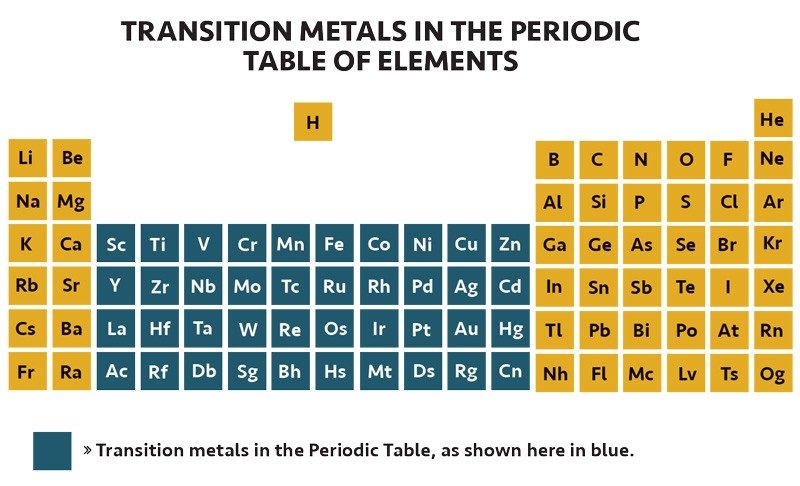
Absorption of Light by Organic Pigments
The part of a molecule responsible for color is known as a chromophore. In organic molecules, a chromophore is found where there is a sequence of alternating single and double covalent bonds. Such a sequence is known as conjugation.
The length of some carbon-to-carbon bond in experiments also shows that molecules with a longer skeleton of conjugation absorb energy at longer wavelengths than those with less extensive conjugation.
When this energy is absorbed it promotes electrons to an excited state. This again leads to selective absorption of the visible light spectrum that results in reflected color.
Thus, many substances with a few conjugated bonds, such as benzene appear colorless because they absorb in the ultraviolet region of the spectrum outside the range of visible light. The chromophore in β-Carotene, however, absorbs in the blue end of the visible spectrum and transmits light in the red and orange areas, which are at longer wavelengths.

It is the long, conjugated carbon chain in β-Carotene that imparts a strong, yellow-orange color to vegetables, such as carrots and winter squash, and fruit, such as apricots and cantaloupes.
The effects of conjugation may be seen in many other organic pigments. Alizarin is the main pigment in red paint known to artists by the names Rose madder or Alizarin Crimson.
Alizarin, initially produced from the root of the Madder plant, was one of the first natural dyes to be produced synthetically in 1869, which led to the collapse of the market in the dye from its natural source.
The deep navy-blue color of indigo is also due to conjugation. In 1831, the renowned Japanese artist, Hokusai, used paint pigmented by Prussian blue and indigo to depict a dramatic coastal scene in “The Great Wave at Kanagua.”
Later on, a German winner of a Nobel prize, Adolf von Baeyer, determined the structure of indigo in 1870, although it was not until the turn of the 20th century that the industrial production of synthetic indigo, began to replace its natural source.
In the modern world, azo compounds are a common, synthetic coloring agent used in paints, textiles, pharmaceutical products, foods, and cosmetics. German chemist August Kekulé was the first to identify azo compounds, which have double bonds between nitrogen atoms.
The azo group may be bonded to aromatic groups producing molecules with extended conjugated systems, which act as chromophores and impart vibrant red, orange, or yellow coloration.
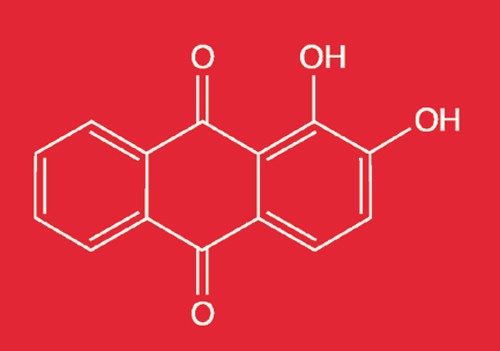
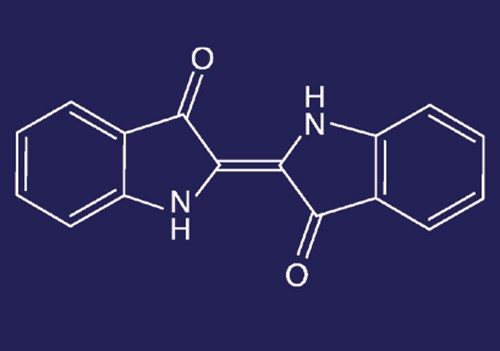
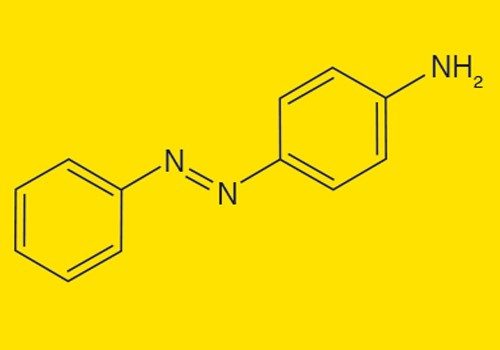
Chemistry Opened a World of Color
While earth pigments, such as ochre, carbon, and burnt sienna, remain in our paint boxes and art palettes, much has changed over time. As chemists discovered new elements and uncovered the secrets of how atoms and molecules interact with light, many types of pigments and paints were created.
Since the 1800s, developments in industrial organic chemistry revolutionized the range of color, intensity, permanence, safety, availability, and affordability of modern pigments and paints.
So, the next time you paint a scene in watercolor, or admire van Gogh’s Starry Night, thank a chemist.
REFERENCES
Cooper, R.; Deakin, J.J. Botanical Miracles: Chemistry of Plants that Changed the World. CRC Press, Taylor and Francis Group: Boca Raton, Fla., 2016; Chap 7, pp 189–233.
Sequin-Frey, M. The Chemistry of Plant and Animal Dyes. Journal of Chemical Education. April 1, 1981: https://pubs.acs.org/doi/pdf/10.1021/ed058p301 [accessed Dec 2022].
Lambourne, R., Strivens, T.A., Eds. Paint and Surface Coatings: Theory and Practice, Second Edition. Woodhead Publishing, Ltd.: Cambridge, U.K., 1999.

